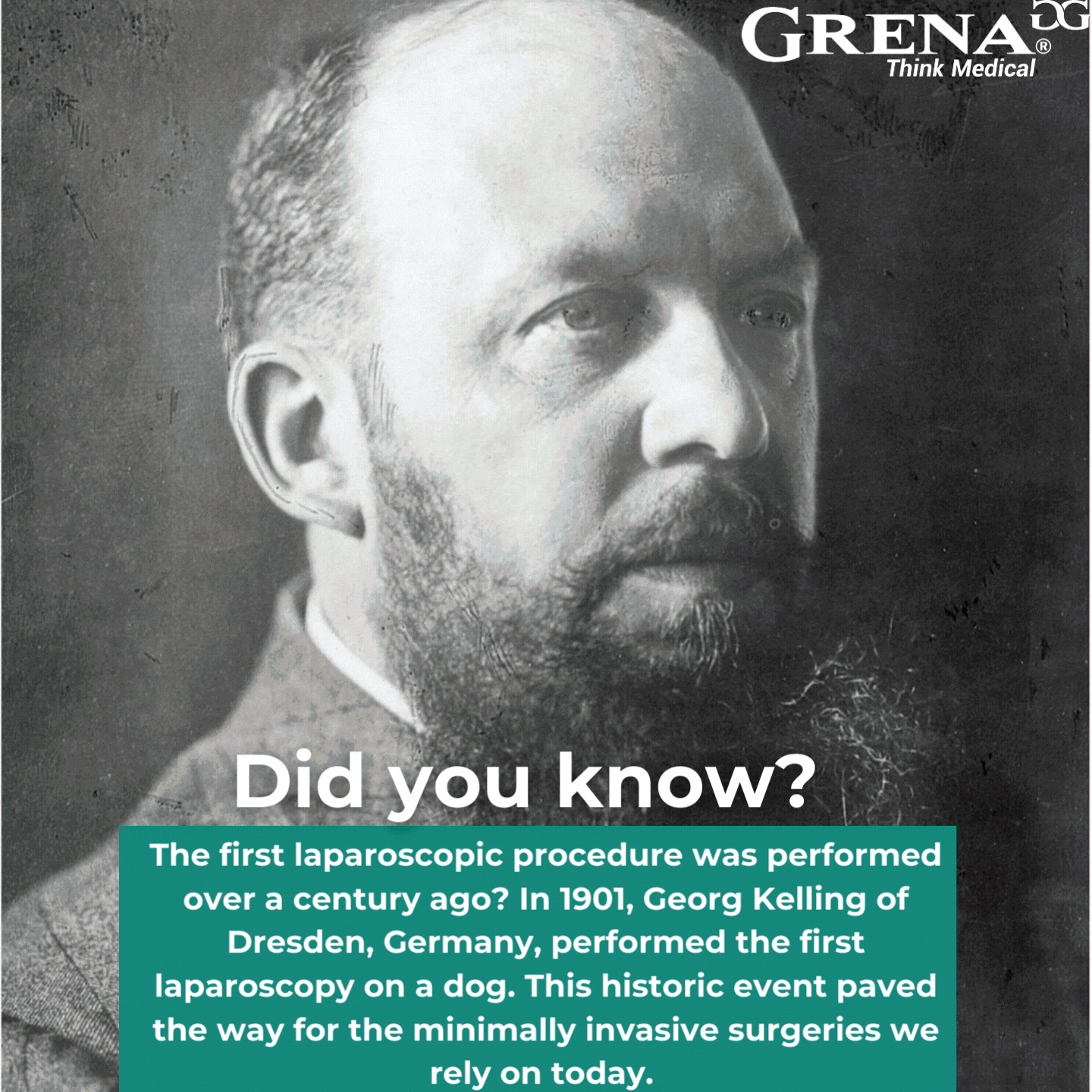Lap-5 – laparoscopic surgery enhancement
Did you know? The first laparoscopic procedure was performed over a century ago? In 1901, Georg Kelling of Dresden, Germany, performed the first laparoscopy on a dog. This historic event paved the way for the minimally invasive surgeries we rely on today.
Minimally invasive surgery has significantly transformed the medical field, offering patients quicker recovery times, less pain, and reduced scarring. From the early days of laparoscopy to the advanced techniques we see now, the development has been impressive.
Despite the advancements, there are still countries where laparoscopic procedures are not yet widely adopted. At Grena, we believe in making advanced medical technology accessible to all thus we strongly support the introduction of minimally invasive techniques from the early days of our activity.
In the world of thoracic surgery, Video-Assisted Thoracoscopic Surgery (VATS) and Robotic-Assisted Thoracoscopic Surgery (RATS) are prime examples of how technology continues to push boundaries. Dr. Diego Gonzalez Rivas has made substantial contributions to VATS, particularly in the area of uniportal VATS.
His work has enhanced the procedure, making it a safer and more effective option for patients with lung disease. We are proud to support Dr. Rivas in his work and development of these techniques.
Grena’s focus relies on delivering the safest ligating solutions but also in providing the quality devices for minimally invasive surgery with the best value for money ratio.
Our latest line of disposable laparoscopic devices – LAP-5 – continue to enhance surgical precision.
Together, we can innovate and expand the reach of minimally invasive surgery across the globe to ensure more patients benefit from these life-changing procedures.

